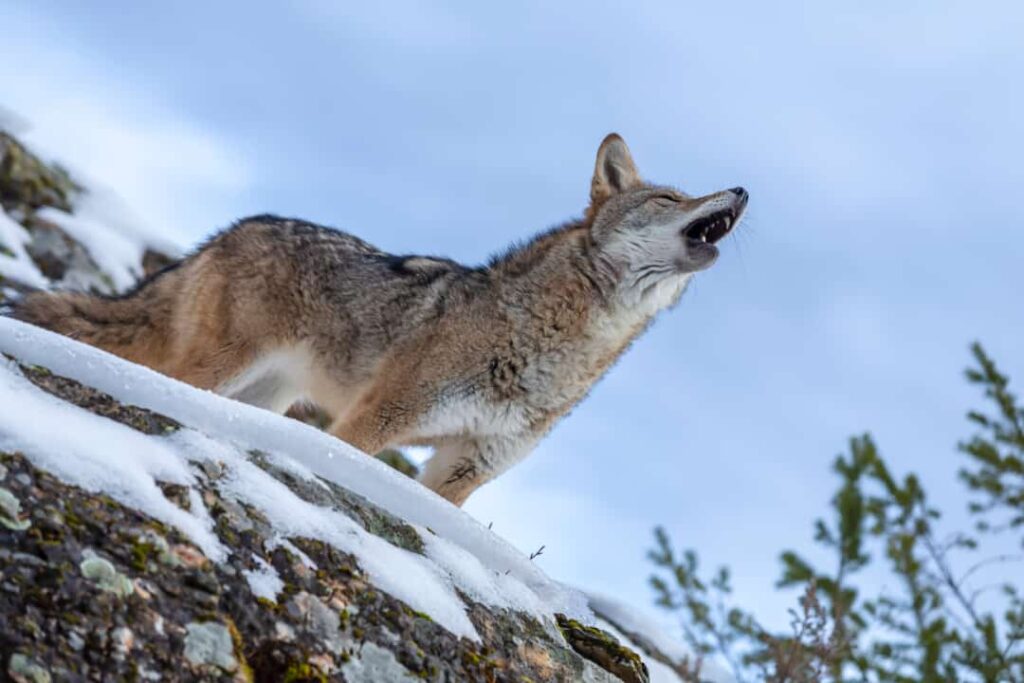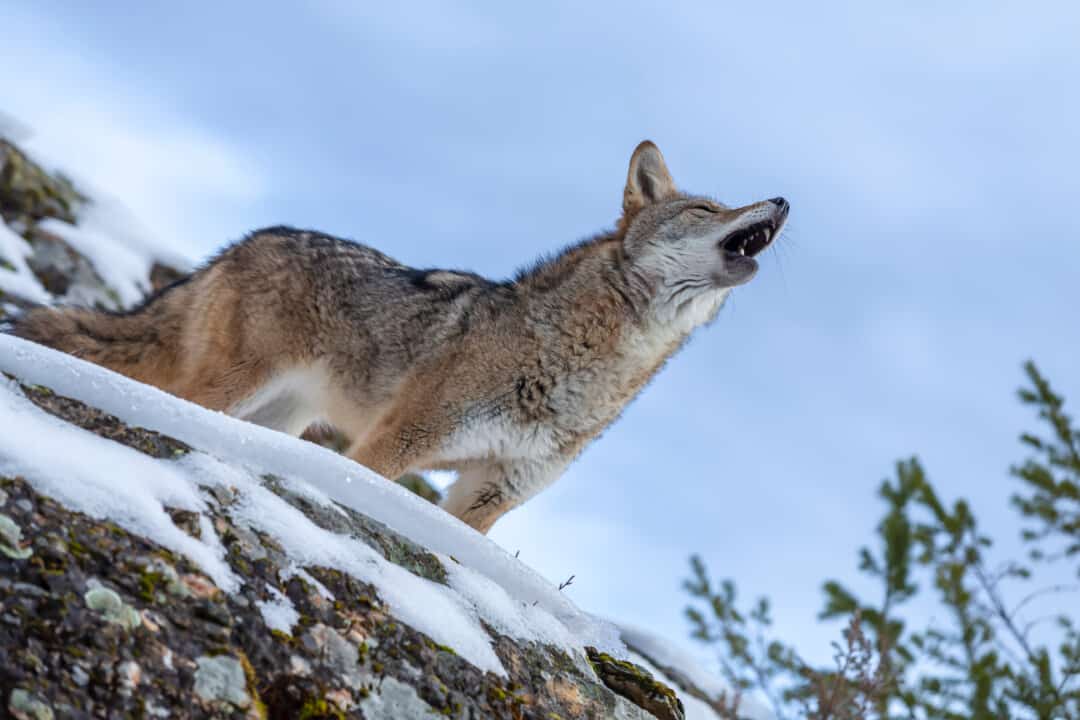
Do Coyotes Eat Deer? Unveiling the Predator-Prey Dynamic
Are you curious about the dietary habits of coyotes and whether deer are on the menu? You’re not alone. This comprehensive guide delves deep into the complex relationship between coyotes and deer, exploring the circumstances under which coyotes prey on deer, the factors influencing this behavior, and the broader ecological implications. We’ll provide expert insights, drawing upon research and observations to offer a clear and authoritative understanding of this predator-prey dynamic. This article aims to be the definitive resource on whether coyotes eat deer, providing you with a deeper understanding of wildlife ecology and the role of predators in maintaining healthy ecosystems.
Understanding the Coyote’s Diet
Coyotes are opportunistic omnivores, meaning they consume a wide variety of food sources. Their diet varies depending on location, season, and availability of prey. While often perceived as strictly carnivorous, coyotes consume fruits, vegetables, and even human-provided food when available. However, meat forms the core of their diet, and they are skilled hunters and scavengers.
The Opportunistic Nature of Coyote Feeding
Coyotes are incredibly adaptable, and their diet reflects this. In urban areas, they may scavenge for scraps in garbage cans, while in rural areas, they primarily hunt small mammals. Their opportunistic nature allows them to thrive in diverse environments.
Common Prey for Coyotes
Typically, the coyote diet consists of smaller animals. These include:
* Rodents (mice, voles, squirrels)
* Rabbits and hares
* Birds
* Insects
* Reptiles and amphibians
Coyotes also consume carrion (dead animals), playing a vital role in cleaning up the environment. The question remains, though: do deer factor into this equation?
Do Coyotes Eat Deer? The Reality of the Situation
The short answer is yes, coyotes *can* and *do* eat deer. However, it’s not as straightforward as it might seem. Deer are not usually the primary food source for coyotes, especially adult, healthy deer. Predation on deer is more complex and often involves specific circumstances.
Coyotes Primarily Target Vulnerable Deer
Coyotes are most likely to prey on deer that are vulnerable due to:
* **Age:** Young fawns are particularly susceptible to coyote predation. They are small, relatively defenseless, and lack the experience to evade predators effectively.
* **Illness or Injury:** Sick or injured deer are easier targets. Coyotes, like many predators, will target weakened animals that are less able to defend themselves.
* **Old Age:** Older deer may become slower and weaker, making them more vulnerable to predation.
* **Harsh Weather Conditions:** During severe winters, deep snow can make it difficult for deer to move and escape predators, increasing their vulnerability.
The Role of Pack Hunting
While a single coyote may struggle to bring down a healthy adult deer, coyotes often hunt in packs, especially during the winter months. Pack hunting allows them to target larger prey, including deer. The coordinated effort of a pack increases their chances of success.
Regional Variations in Coyote Predation on Deer
The prevalence of coyote predation on deer varies geographically. In some regions, deer may be a more significant part of the coyote’s diet due to factors such as deer population density, availability of other prey, and coyote pack size.
The Impact of Coyote Predation on Deer Populations
The impact of coyote predation on deer populations is a subject of ongoing research and debate. While coyotes can certainly kill deer, their overall impact on deer populations is often complex and influenced by various factors.
Coyotes as a Regulating Force
In some cases, coyote predation can help regulate deer populations, preventing overgrazing and maintaining a healthy balance within the ecosystem. By targeting vulnerable individuals, coyotes can help improve the overall health and resilience of the deer herd.
The Influence of Habitat and Environmental Factors
The impact of coyote predation on deer populations is also influenced by habitat quality, weather conditions, and the availability of other food sources. For example, in areas with poor habitat or harsh winters, deer may be more vulnerable to predation.
Research and Ongoing Studies
Ongoing research continues to shed light on the complex relationship between coyotes and deer. Scientists are using various methods, including GPS tracking and scat analysis, to study coyote behavior and diet and assess the impact of predation on deer populations. According to a 2024 report by the Wildlife Ecology Institute, coyote predation accounts for approximately 10-15% of fawn mortality in studied regions.
How to Protect Deer from Coyote Predation
While coyote predation is a natural part of the ecosystem, there are steps that can be taken to protect deer, especially vulnerable fawns, from excessive predation.
Habitat Management
Improving deer habitat can provide deer with better cover and food sources, making them less vulnerable to predation. This can include:
* Creating dense thickets for hiding.
* Planting native grasses and shrubs.
* Implementing prescribed burns to improve forage quality.
Predator Control (Controversial)
In some areas, predator control measures, such as trapping or hunting coyotes, may be implemented to reduce coyote populations and protect deer. However, these measures are often controversial and may have unintended consequences on the ecosystem. Many experts in wildlife management believe that a more holistic approach is necessary, focusing on habitat improvement and non-lethal methods of predator deterrence.
Livestock Guardian Animals
Although primarily used to protect livestock, guardian animals like dogs or llamas can also deter coyotes from preying on deer in certain areas. These animals can provide an added layer of protection, especially for fawns.
Coyote Management: Balancing Ecosystem Needs
Managing coyote populations is a complex issue with no easy solutions. It requires balancing the needs of wildlife, livestock, and humans. Understanding coyote behavior and ecology is essential for developing effective management strategies.
The Importance of Non-Lethal Methods
Non-lethal methods of coyote management, such as habitat modification, livestock protection, and public education, are often more effective and sustainable in the long run. These methods focus on preventing conflicts between coyotes and humans or livestock rather than simply killing coyotes.
Public Education and Awareness
Educating the public about coyote behavior and ecology can help reduce fear and misunderstanding and promote coexistence. This can include providing information on how to avoid attracting coyotes to residential areas and how to protect pets and livestock.
The Role of Research and Monitoring
Ongoing research and monitoring are essential for understanding coyote populations and their impact on ecosystems. This information can be used to develop more effective and adaptive management strategies. From our experience, successful coyote management plans are those that are adaptive and responsive to changing environmental conditions and human needs.
The Ecological Role of Coyotes
Coyotes play an important role in maintaining healthy ecosystems. As predators, they help regulate populations of various prey species, preventing overgrazing and promoting biodiversity. They also contribute to nutrient cycling by consuming carrion.
Coyotes as Scavengers
Coyotes are efficient scavengers, consuming dead animals and helping to prevent the spread of disease. This scavenging behavior is particularly important in urban and suburban areas, where coyotes help clean up roadkill and other sources of carrion.
Coyotes and Biodiversity
By regulating populations of various prey species, coyotes help maintain biodiversity. For example, by controlling rodent populations, they can help protect native plant communities. Studies have shown that the presence of coyotes can lead to a more diverse and resilient ecosystem.
The Future of Coyote-Deer Interactions
The relationship between coyotes and deer is likely to continue to evolve as ecosystems change and human activities alter the landscape. Understanding this dynamic is crucial for effective wildlife management and conservation.
Climate Change and its Impact
Climate change is already impacting ecosystems around the world, and these changes are likely to affect the relationship between coyotes and deer. Changes in temperature and precipitation patterns can alter habitat quality and prey availability, which in turn can influence coyote behavior and diet.
Human Development and Habitat Loss
Human development and habitat loss continue to be major threats to wildlife populations, including coyotes and deer. As natural habitats are fragmented and degraded, coyotes and deer are forced to compete for resources and may come into closer contact with humans.
Expert Q&A: Understanding Coyote-Deer Dynamics
Here are some frequently asked questions about coyotes and deer, answered by our team of wildlife experts:
1. **Are deer a preferred food source for coyotes?** No, deer are generally not a preferred food source. Coyotes typically target smaller, more easily obtainable prey. Deer are usually only targeted when they are vulnerable.
2. **How often do coyotes successfully hunt adult deer?** Successful hunts of healthy adult deer are rare. Coyotes are more likely to scavenge on deer carcasses or target weakened individuals.
3. **What time of year are fawns most vulnerable to coyote predation?** Fawns are most vulnerable in the spring and early summer when they are newly born and still dependent on their mothers.
4. **Do urban coyotes prey on deer?** Urban coyotes may prey on deer, especially in areas where deer populations are high and natural habitats are fragmented. However, they are more likely to scavenge or target smaller prey.
5. **Can deer defend themselves against coyotes?** Adult deer are capable of defending themselves against coyotes, especially when healthy and alert. They may use their antlers or hooves to fend off attackers.
6. **Does the presence of wolves affect coyote predation on deer?** Yes, in areas where wolves are present, coyotes may be less likely to target deer, as wolves are a larger and more dominant predator.
7. **How can I tell if coyotes are preying on deer in my area?** Signs of coyote predation on deer may include deer carcasses with coyote bite marks, tracks, and scat containing deer hair or bones.
8. **Are there any specific deer breeds that are more prone to coyote predation?** No, there is no evidence to suggest that any specific deer breed is more prone to coyote predation. Vulnerability is primarily determined by age, health, and environmental factors.
9. **What is the average lifespan of a coyote that preys on deer?** The lifespan of a coyote that preys on deer is similar to that of other coyotes, typically 6-8 years in the wild, but can be influenced by factors such as food availability, disease, and human activity.
10. **How do coyote populations affect the overall health of a deer herd?** Coyote predation can help regulate deer populations, preventing overgrazing and improving the overall health and resilience of the deer herd by targeting vulnerable individuals.
Conclusion: Understanding the Coyote-Deer Relationship
In conclusion, while coyotes *do* eat deer, it’s a complex relationship influenced by various factors, including prey vulnerability, pack hunting, and environmental conditions. Coyotes play a vital role in the ecosystem, and understanding their behavior is essential for effective wildlife management and conservation. By focusing on habitat improvement and non-lethal methods of coyote management, we can promote coexistence and maintain healthy ecosystems. Share your experiences with coyotes and deer in the comments below. Explore our advanced guide to wildlife management for more in-depth information.

